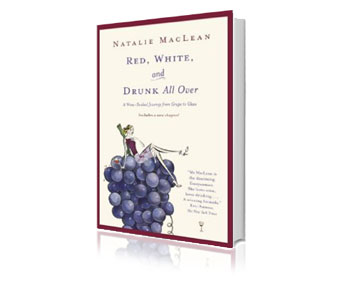There is 1 user submitted review for this wine.
Matt Steeves rated this wine as
95/100 with the following review:
This is one of the most exciting wine projects to emerge in the premium wine scene in Ontario. Dobbin Estate is located along the renowned Twenty Mile Bench sub-appellation of Ontario’s Niagara Peninsula.
It’s here where oenologists/winemakers Peter Gamble and Ann Sperling worked with the Dobbin principals (Wade Dobbin and his nephew Nathan) to complete a geological assessment of the terroir across the Estate which validated that they had the perfect terroir to realize their ultra premium wine project. As Gamble says, crafting Cru quality wines is all about “location, location, location”, and it turns out that’s exactly what the Dobbin Estate provides. A property of ~50 acres along the Twenty Mile Bench, including mature woodlands, a 7 acre water feature, and just over a third under vine, all organically farmed. While Twenty Mile Bench provenance led them to this land, it was the characteristics of that Bench soil, including the high concentration of calcium carbonate they discovered which confirmed their vision for greatness could be realized there.
Empirical evidence has shown that high levels of calcium carbonate in a vineyard contributes significantly to the minerality, structure, and overall complexity of wines grown in those conditions, often resulting in wines with balanced acidity, pronounced minerality, and distinctive expressions of the specific terroir. Since many of the world’s finest wines (including top quality Champagne and Burgundy) originate from vineyards with similarly high calcium carbonate content, Gamble was confident this land had everything he needed to launch one of the most interesting high quality focused wine projects around.
Fast forward to present day, and the launch of the inaugural vintage of Dobbin Estate Dry Riesling (2019). A wine most in-the-know would expect to have a relatively high level of quality thanks to its Twenty Mile Bench provenance, but winemaker Peter Gamble took it to the next level with labour intensive viticultural practices he first learned decades ago in Germany. Those labour intensive practices that Gamble refers to, coupled with exceptional terroir, are responsible for producing many of the finest German wines available, typically fetching hundreds of dollars a bottle. This is what guided Gamble, following a similar approach, Gamble notes that grapes were harvested on four separate occasions over several weeks in October and November 2019 to pick the best bunches with the best characteristics at various stages of their ripening. Without a predetermined recipe to follow, or logistical pressures of picking a certain percentage/volume on any given day to accommodate facility constraints, they instead opted to select the best bunches showing the best characteristics to incorporate in their wine, then carrying-out separate fermentations on each of those batches throughout the fall, some of which were ridiculously small, and each batch getting unique treatment to suit the characteristics of the wine (such as managing different levels of Botrytis), and finally assembling the components to produce a wine with remarkable flavour and textural complexity. After a few years in bottle, Gamble decided it was time to release it in 2024.
The nose shows rich stone fruits, wildflower honey, citrus, petrol, flinty wet stone minerality and subtle sweet spices. The palate repeats while bringing an impressive weight and body with a creamy mid-palate that’s contrasted by remarkable freshness with its vibrant acidity and minerality that persists on the long and textured finish. While the 2019 vintage has now benefitted from a few years of bottle refinement, and is showing beautifully at the time of this review, the reality is, it’s still in its early days and the best is yet to come. Recommend to cellar for a few more years while it unwinds and opens up then enjoy over the next decade with charcuterie, spicy Asian cuisine, Ceviche or Tartare. A wine I’d highly recommend starting a vertical with and if you’re lucky, taking advantage of the large format option too while they’re available given the limited quantities. Drink 2027 to 2035(+). Tasted June 2024. 95-97 points. Matt Steeves – www.quercusvino.ca
 Best Books of the Year
Best Books of the Year Best Books of the Year
Best Books of the Year
















